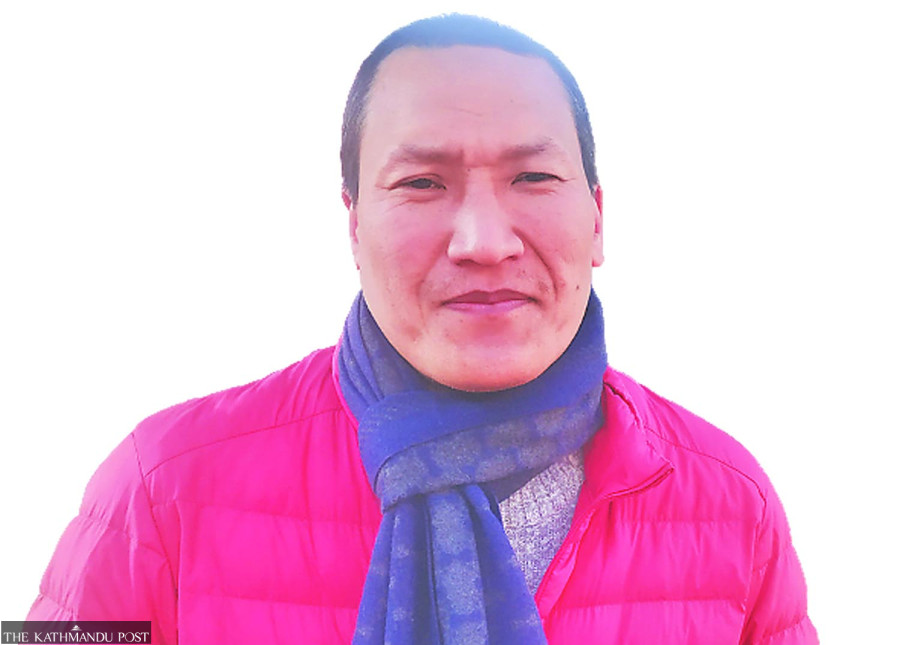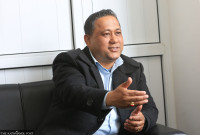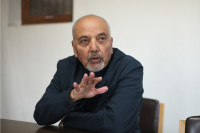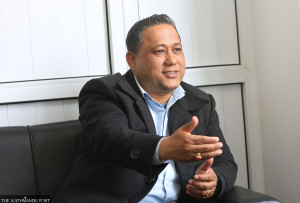Interviews
How traditional media are evolving
New media and social media have made information flow more interactive, giving individuals more power to create and share content.
Purushottam Poudel
Media researcher Harsha Man Maharjan is associated with Martin Chautari, one of the few social science research organisations in Nepal. Maharjan holds a doctorate degree in media studies from Kyoto University in Japan and has extensively studied Nepal's media industry. Purushottam Poudel of the Post spoke with Maharjan on the theory of media, its applicability in the changed context, the issue of media regulation, digital democracy, old and new media and a host of other issues. The following are excerpts from that interview.
In the traditional media, the media dependency theory had a dominant role in a country like ours. How do you evaluate the media dependency theory with the emergence of new media?
We know that the media dependency theory discusses the core and the periphery. It assumes that people on the periphery need to depend on the media at the core. As a media researcher, I cannot state that this theory does not have its influence, but of late, its effect has waned. Many local media outlets are now becoming global in terms of their access in the current scenario. As a result, not only the foreign media, but our media too, can equally influence foreigners with good content.
We can understand the celebration of this theory as media imperialism and its critique from the work of British scholar Jemery Tunstall. In the heyday of this theory, that is in 1977, he published a very important book, titled, The Media Are American.
The title speaks for itself. Simply, it says that the media are American. By this, he means that there was the domination of western media, mainly the American and British, in the world. He mentioned that developing countries could not make their own movies so they imported Hollywood movies. In the case of Nepal, it is interesting to remember that Nepal Television which was started in 1985 with a mission to promote national culture, later imported American teleserials, like Night Rider and Automan. In his book, Suitably Modern: Making Middle-class Culture in Nepal, Mark Liechty mentioned that around 1991, Nepal Television aired six Pakistani serials, four Hindi serials, including seven English serials.
However, the influence of the theory has been declining. In 2008, Jeremy Tunstall revised his thesis and published another book, The Media were American: US Mass Media in Decline. In this book, he has described the increasing role of national media with huge populations. He has highlighted the media from the perspective of nations like China, India, and Brazil. So, the dependency theory was successful up until recently for these causes.
Did the rise of new media weaken the media dependency theory?
Before answering this question, we have to know what is new media. There are scholars who think that the word ‘new media’ is a slippery term. Are the characteristics of new media totally different from old media? What is new about the new media? These are theoretical questions. Scholars have written books on these questions. When we say new media, often the people include online news media and social media. These media are highly interactive. So, the audiences can easily participate in new media as compared to traditional media. Digital content can use multimedia so the boundaries of print, radio and television have ended.
We should look at this question from two perspectives. On the one hand, social media has made people who did not have a say in traditional media, vocal comparatively. They don’t need to depend on traditional media. Activists can fight with international media players. They can criticise their representation in these media. They can try to make them accountable. So, the silenced people can speak. The traffic of information is not one-way as in the past. In fact, information flows in multiple ways. So we can say that the media dependency theory is undoubtedly waning as news sources multiply. Of course, the question of what to call the core and peripheral has arisen as a result of the new media. Social media does have a role to play in society, even though it would be too early to claim that they have a similar impact to that of traditional media in terms of bringing about changes.
However, if we think about the powerful IT companies, it seems as if dependency theory helps us to make sense of the present world where a few companies from western countries dominate. Let us take an example of social media platforms. In 2022, the top five such platforms were Facebook, YouTube, Whatsapp, Instagram, and TikTok. Except for TikTok which is based in China, the rest are based in the US. Our interaction with the world depends on these companies. People are hooked to them due to the powerful algorithms these platforms use. News media in Nepal depend on some of these platforms to distribute content to the audiences. News media companies worry that their brand names would be overshadowed by these social media platforms. Can we call this another kind of dependency?
With the expansion of the internet, new types of media have emerged, putting the need for their regulation up for debate. What’s your take on it?
This can be viewed from two policy debates. One is self-regulation. That means the media industry should make its own rules and ethics, and should not wait for the government to interfere. New media should improve themselves. They should have their own ethical guidelines. To prepare such guidelines, they need to sit together and discuss their problems.
In terms of legislation, our constitution ensures complete press freedom. The legal documents are important: Electronic Transaction Act (ETA), 2006 and Online News Operation Directive. Though the ETA was made to govern electronic transactions, it contains article 47 which restricts freedom of expression, online. In fact, as my research shows, this article appeared in an ordinance brought out by the royal regime and it was not changed when this Act was passed in 2006. Governments have misused this Act to breach press freedom. The directive is based on a non-media-related Act, the Good Governance (Management and Operation) Act, 2064 (2008). This makes it mandatory for online news media to register at the Department of Information. The question of whether new media should be registered is currently being discussed within the country. There are some nations where media organisations, mainly newspapers, can operate unregistered. So, the government needs to prepare different laws related to online media in consultation with the industry.
There are discussions on the need to regulate new media as Nepal’s traditional media are under the purview of law. Meanwhile, the idea of digital democracy has come up. How do these schools of thought relate?
Digital democracy is a contradictory idea in itself. For instance, Balen Shah, the mayor of Kathmandu, declared that he would stream a municipal meeting live on social media. Is that a digital democracy?
Making powerful people more accountable through digital media could be a part of digital democracy. In this situation, anyone can respectfully pose a question to a person in authority. Here we should not forget these questions: Who wants to speak in a digital democracy and why they want to speak or who does not want to speak and why they do not want to speak are other issues that need to be addressed.
One shouldn't be permitted to express himself in whatever way he wants in the name of digital democracy. The frequency of hate speech has also grown recently. Digital democracy must therefore also be balanced. Hence, it is important to keep an eye on all forms of media, whether they are new or old.
Basically, from the new forms of media, populism in politics has become prevalent. Leaders try to draw followers to themselves by using emotion, rather than logic. Instead of making us mature, the growing media has made people immature. We have a rising propensity to scold the one we do not like rather than have a debate on the subject. There is a notion of digital democracy where people should have the ability to express their opinions. Yet, it should also adopt regulatory measures for balance.
So are you suggesting that with the rise of the new form of media, populism in politics has increased?
Certainly, the rise of new media has contributed to an increase in populism in politics. Before, political party leaders had to use traditional media to express their views. But as new media becomes more significant, leaders no longer seem to require traditional media as much as they did in the past.
In traditional media, before the news gets published, there is a rigorous editing procedure. Hence, it may not be published if what someone is trying to express is not true. However, the new media, which is in direct control of the leaders and their views, will have a lesser chance of gatekeeping. Furthermore, it has made it simpler for them to resort to populism.
Of late, there are many questions before the traditional media. Are they fair?
Being a media researcher, I am also aware of the problems within our traditional media. There are questions about our traditional media. I don't believe all of the accusations are real but some may be. However, we have only looked at the work of the media in black and white. We should have a nuanced understanding of how the media works.
Mass media were the sole channels of communication with a large audience until recently. Now, new media have been more effective at reaching the general public. And when mass media have an online presence, should they still be called traditional media?
The term ‘new media’ raises the question, "What exactly is new media?" Theoretically, whichever media emerges, at the very beginning, it becomes a new media.
We need to keep in mind a few factors when we discuss new media. Interactivity is higher in new media. Traditional media do not allow for the type of interaction that the new media does. Because of the new media's effect, traditional media now also distributes their material through them.
Although new media like Facebook, Twitter, YouTube, and TikTok are all effective communication tools, they also have drawbacks. The fact that new media content must be delivered promptly makes it challenging to confirm its veracity.
It can also be seen from an alternative angle. Traditional media no longer use just a traditional medium. Many FMs now broadcast their shows live on Facebook, if FM is still considered a conventional media. Because of this, it is now challenging for us to differentiate between traditional media and new media. Currently, there are no boundaries for the media. The conventional media still plays an important role. They can practise journalism which new forms of media cannot do due to financial burdens like long-form investigative reporting.
How do you find the changing media landscape and its future?
It was once believed that print media in South Asia, including Nepal, had no impact on the internet. A few owners of Nepali print media had predicted in 2018-2019 that print and online media will co-exist for another 30 years. Covid-19 made all those claims wrong.
The urge to read newspapers appears to be declining. Because of this, print media owners have begun to declare their intention to become public companies. I am also waiting to see how the future unfolds for the Nepali media industry. Traditional media may, however, alter them over time, since that’s already a work in progress.




 17.44°C Kathmandu
17.44°C Kathmandu












